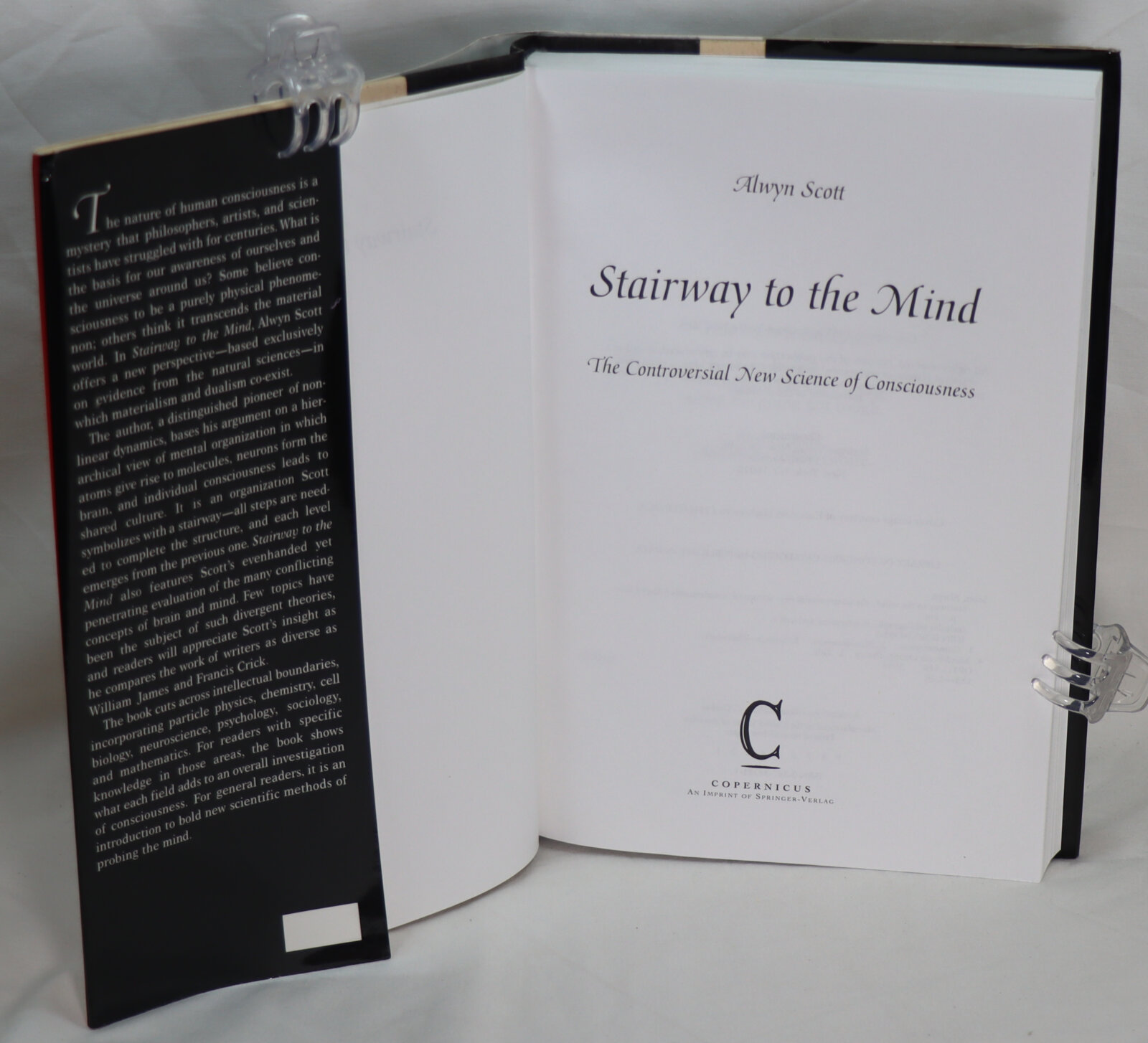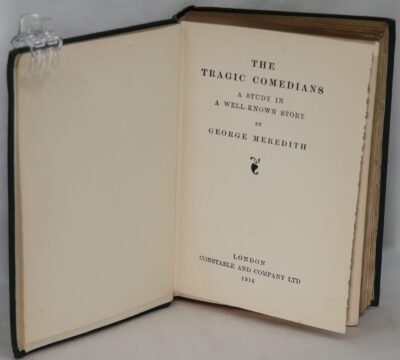Stairway to the Mind.
By Alwyn Scott
ISBN: 9781461225119
Printed: 1995
Publisher: Copernicus. New York
| Dimensions | 17 × 24 × 2 cm |
|---|---|
| Language |
Language: English
Size (cminches): 17 x 24 x 2
Condition: Fine (See explanation of ratings)
Item information
Description
In the original dustsheet. Black cloth spine with gilt title. Cream boards.
-
F.B.A. provides an in-depth photographic presentation of this item to stimulate your feeling and touch. More traditional book descriptions are immediately available.
Human consciousness has perplexed philosophers, artists and scientists for centuries. Some hold it to be purely physical, while others believe it transcends the material world. Now comes a book that offers a new perspective – based entirely on evidence from the natural sciences – whereby materialism and dualism co-exist. The author – a distinguished pioneer of nonlinear dynamics – bases his argument on a hierarchical view of mental organization; a stairway. Atoms give rise to molecules, neurons form the brain and individual consciousness leads to shared culture. All steps are needed to complete the picture and each level derives from the previous one. The book shows specialists how each of their fields adds to the overall picture, while providing general readers with an introduction to this investigation.
Review: What struck me most from the book was the fact that all sciences are separated by barriers. From quantum physics to chemistry to biology, the author tries to build a coherent structure of thought to guide us towards understanding consciousness. However, there are gaps between these sciences and I believe that only “The Theory of Everything” can bridge these gaps if it is ever discovered one day. Indeed I tend to agree with the author that consciousness cannot be explained by just one theory monopolized by one field of science. As he put it:
“Like life, the phenomenon of consciousness is intimately related to several levels of the scientific hierarchy, so the appropriate scientists-cytologists, electrophysiologists, neuroscientists, cognitive scientists, psychologists, psychiatrists, neurologists, anesthesiologists, sociologists and ethnologists-should be working together. It is difficult to see how this elusive phenomenon might otherwise be understood.”
Want to know more about this item?

Related products
Share this Page with a friend











